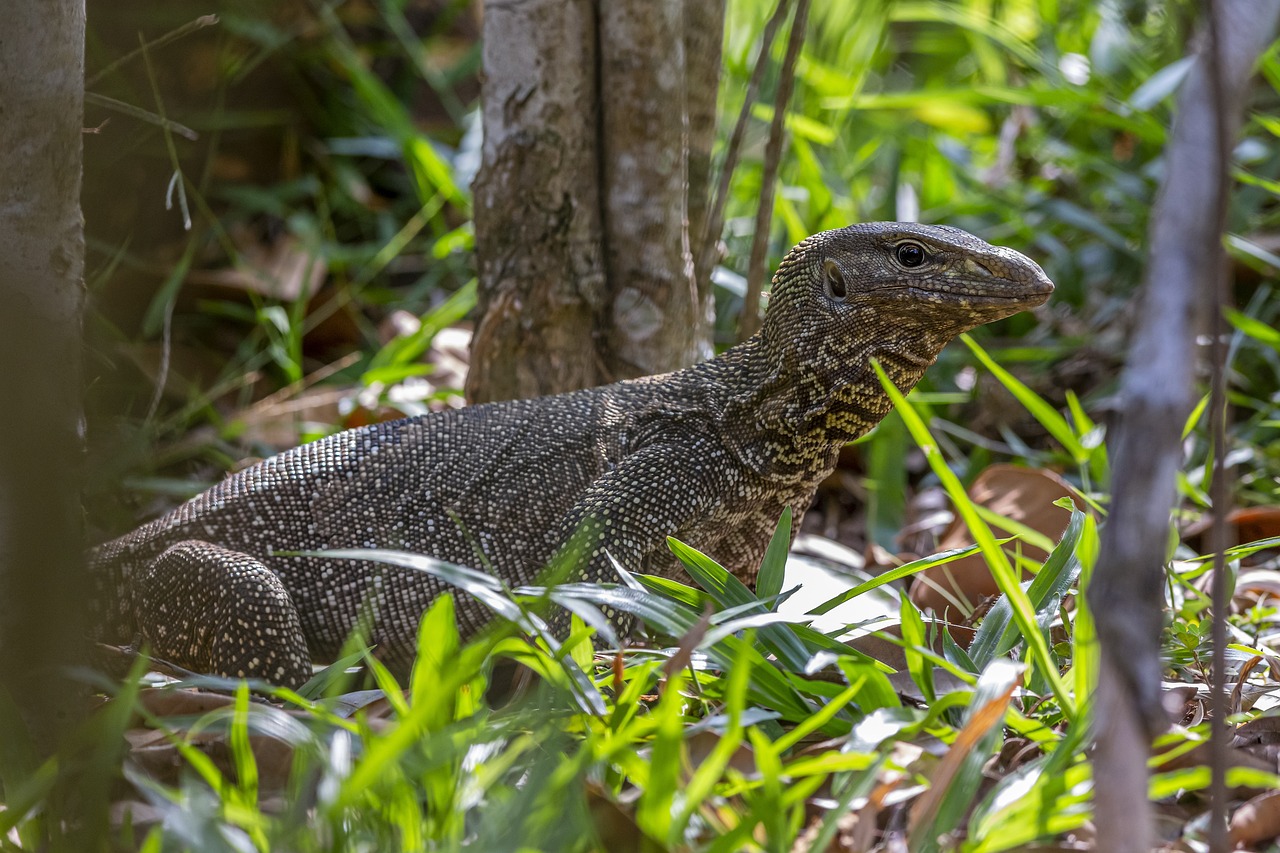- Asian Water Monitor (Varanus salvator): The Asian Water Monitor is a species of monitor lizard native to South and Southeast Asia. It is one of the largest lizard species in the world, capable of growing up to 3 meters (10 feet) in length. They are excellent swimmers and are commonly found near water bodies such as rivers, lakes, and mangrove swamps.
- Cruel: The term “cruel” might be associated with the predatory behavior of the Asian Water Monitor. As carnivores, they hunt a variety of prey including fish, birds, small mammals, reptiles, and even carrion. Their method of hunting can seem harsh to some observers, but it’s a natural behavior necessary for their survival.
- Spotted: Asian Water Monitors typically have a dark-colored body with lighter spots or bands along their back and tail. These spots help camouflage them in their natural habitat, making it easier for them to blend into their surroundings while hunting or evading predators.
- Australia: While the Asian Water Monitor is native to South and Southeast Asia, it has been introduced to some parts of Australia, particularly in the northern regions. In Australia, they are considered invasive species and can have significant impacts on local ecosystems.
- Tropical Climate: Asian Water Monitors are well-adapted to tropical climates, thriving in warm and humid environments. They are commonly found in regions with dense vegetation and ample water sources, where they can regulate their body temperature and find prey.
- Crawling: Asian Water Monitors are quadrupedal reptiles, meaning they move using all four legs. They crawl along the ground or swim in water with their powerful limbs and muscular bodies.
- Claw: Asian Water Monitors have sharp claws on their feet, which they use for climbing, digging, and capturing prey. These claws are essential for their survival in their natural habitat.
- Endangered Species: The Asian Water Monitor is not currently considered an endangered species. However, habitat loss, poaching, and the pet trade pose threats to some populations, particularly in heavily urbanized areas.
- Thailand: Thailand is one of the countries where the Asian Water Monitor is commonly found. They inhabit various habitats across the country, including forests, wetlands, agricultural areas, and urban environments.
- Reptile: The Asian Water Monitor belongs to the reptile class. Reptiles are cold-blooded vertebrates characterized by scales, laying of eggs, and the ability to regulate their body temperature externally.
- Animal, Wildlife, Nature: Asian Water Monitors are integral parts of their ecosystems, contributing to the balance of wildlife populations and ecosystem functions. They play a role as both predators and prey, influencing the dynamics of their habitats.
- Carnivore: Asian Water Monitors are carnivorous reptiles, meaning they primarily eat meat. Their diet consists of a wide range of animals, including fish, amphibians, birds, mammals, and other reptiles.
- Monitor Lizard, Lizard: The Asian Water Monitor belongs to the family Varanidae, which includes all monitor lizard species. They are characterized by their elongated bodies, forked tongues, and sharp claws.
- Animals in the Wild: Asian Water Monitors are wild animals that play important roles in their ecosystems. Observing them in their natural habitat can provide valuable insights into their behavior and ecology.
Overall, the Asian Water Monitor is a fascinating reptile species with unique adaptations for survival in tropical environments. While they are not currently endangered, conservation efforts are important to ensure their continued existence in the wild.
Views: 28
Subscribe to the newsletter:
